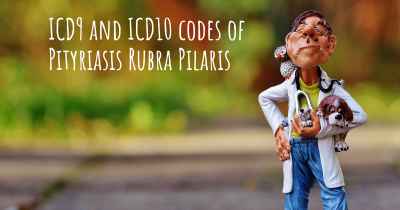What are the best treatments for Pityriasis Rubra Pilaris?
See the best treatments for Pityriasis Rubra Pilaris here

Treatments for Pityriasis Rubra Pilaris
Pityriasis Rubra Pilaris (PRP) is a rare and chronic skin disorder characterized by reddish-orange scaly patches, thickened skin, and small bumps. It can affect both children and adults, and while there is no known cure for PRP, there are several treatment options available to manage the symptoms and improve the quality of life for those affected.
1. Topical Treatments
Topical treatments are often the first line of defense for managing PRP. These medications are applied directly to the affected areas of the skin and can help reduce inflammation, control scaling, and alleviate itching. Some commonly prescribed topical treatments for PRP include:
- Corticosteroids: These anti-inflammatory medications can help reduce redness, itching, and scaling. They are available in various strengths and forms, such as creams, ointments, or lotions.
- Retinoids: Derived from vitamin A, retinoids can help normalize skin cell growth and reduce scaling. They are available as topical creams or gels.
- Salicylic Acid: This keratolytic agent helps soften and remove the thickened skin. It is often combined with other topical treatments to enhance their effectiveness.
2. Systemic Medications
If topical treatments alone are not sufficient, systemic medications may be prescribed to manage PRP. These medications are taken orally or through injections and work throughout the body to suppress the immune system and control inflammation. Some commonly used systemic medications for PRP include:
- Retinoids: Oral retinoids, such as acitretin, can be effective in managing PRP by reducing scaling and thickening of the skin. However, they may have side effects and require close monitoring.
- Methotrexate: This immunosuppressive medication can help control the excessive skin cell growth associated with PRP. Regular blood tests are necessary to monitor its potential side effects.
- Cyclosporine: Another immunosuppressive medication, cyclosporine, can be used to manage severe cases of PRP. It requires careful monitoring due to potential side effects.
3. Phototherapy
Phototherapy involves exposing the skin to specific wavelengths of light to reduce inflammation and slow down the excessive skin cell growth. It can be an effective treatment option for PRP, especially when other treatments have not provided satisfactory results. Two common types of phototherapy used for PRP are:
- Ultraviolet B (UVB) Therapy: This involves exposing the skin to UVB light, which can help reduce inflammation and scaling. It is usually administered in a controlled medical setting.
- Psoralen plus Ultraviolet A (PUVA) Therapy: PUVA therapy combines the use of a light-sensitizing medication called psoralen with UVA light exposure. It can help slow down the excessive skin cell growth and reduce inflammation.
4. Supportive Measures
In addition to medical treatments, there are several supportive measures that can help manage PRP and improve the overall well-being of individuals with the condition:
- Moisturizers: Regularly applying moisturizers can help soothe dry and itchy skin, reducing discomfort associated with PRP.
- Gentle Skin Care: Using mild, fragrance-free cleansers and avoiding harsh soaps or hot water can prevent further irritation and dryness of the skin.
- Sun Protection: Protecting the skin from excessive sun exposure can help prevent flare-ups and reduce the risk of skin damage.
- Psychological Support: Living with a chronic skin condition like PRP can be emotionally challenging. Seeking support from healthcare professionals, support groups, or counseling can be beneficial.
It is important to note that the effectiveness of treatments may vary from person to person, and a combination of different approaches may be necessary to manage PRP effectively. Consulting with a dermatologist or healthcare professional experienced in treating PRP is crucial to develop an individualized treatment plan.








